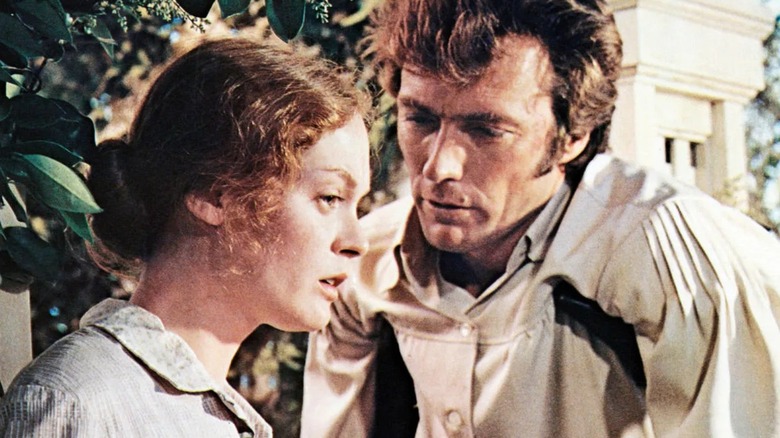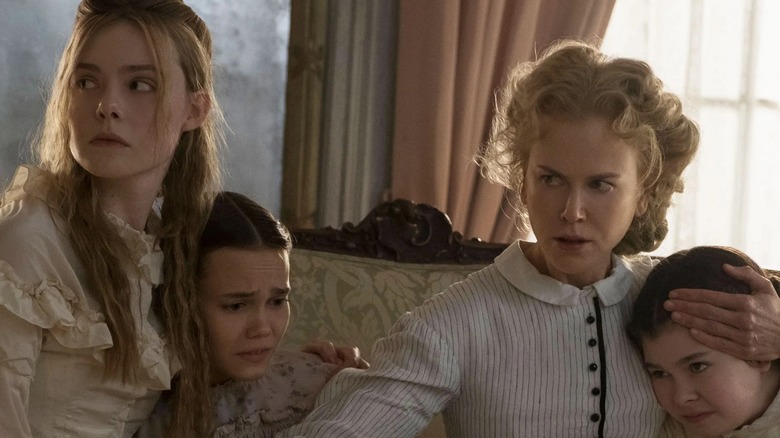The southern Gothic novel of Thomas P. Cullinan, “The Beguiled”, is a story about women. Here, the entirely female residents of a seminar in Virginia are shaken by the arrival of a soldier of the wounded union at the height of the civil war, and what he could represent for each of them. This man, corporal John McBurney, seems harmless at first but triggers a disturbing chain of events that encourages rabies, envy and resentment among women (and children). The slow combustion novel jumps through the perspectives, helping us to reconstruct a dizzying story full of suspense on the fallout from the war, and how it extends to the isolated residents of the seminar.
However, the slow story of Cullinan does not give an agency to its female characters that in relation to McBurney, because their individual wants and wishes to disappear the moment when he is not there. There is a few Interiority has woven when events culminate in an acute tragedy, but Cullinan paints the concept of femininity in large horribly shallow shots. It is a novel about women, written by a man who is only interested in making them pass through the narrow lens of heteronormative desire and jealousy. Solidarity and fraternity are foreign to the premise of “The Brouilled”, and any adaptation that was worth its salt should undoubtedly approach and remedy this blatant problem without preventing complexity.
Don Siegel and Clint Eastwood joined forces to give life to “The Brouille” in 1971 has extremely controversial effect. Although criticisms have disseminated due to its misogynistic, sexploitation bent, Eastwood estimated that the film bombed due to bad marketing and its attempt to play against the type (which, in his case, was a lone heroism alone and a stoic masculinity). The point of view of Siegel and Eastwood on the novel seems rather superficial, the emphasis being placed on the sexual charm (manipulator) of McBurney and how it causes the most violent and dangerous impulses of the women around it. Although Eastwood McBurney is supposed to be an uncompromising predator, his victims are engraved as caricatures, pale shadows from whom they are supposed to be.
Over 40 years after the film was released, Sofia Coppola decided to redo “the attractors” With women at the forefront of the macabre gothic horror tale.
Sofia Coppola’s point of view on the attractive is also terribly controversial
“The Beguiled” by Coppola was presented at first at the Cannes Film Festival in 2017 and immediately had an impact with a better victory as a historic director. However, this adaptation has become controversial from the start: although the film is greater than the 1971 version in its treatment of femininity and the female agency, it seemed to have deliberately eluded intersectionality. The only black character in the novel, Mattie, is visibly absent from the film, and Edwina, a biracial woman in source material, is represented by Kirsten Dunst in this adaptation. Coppola justified some of these choices in a declaration published on Indiewire::
“There are many examples of how slaves have been appropriate and” given by a voice “by white artists. Rather than an act of denial, my decision not to include Mattie [the only Black character in the novel] In the film comes from respect […] Some said it was not responsible for filming during the civil war and not to deal directly with slavery and slave characters. I did not think it by preparing this film, but I thought about it and I will continue to do it. “”
Coppola also said that she did not want to “perpetuate a reprehensible stereotype” which was integrated into source equipment, which informed its decision to focus only on “the dynamics of male and female power which could relate to all women “. Although the intention not to regurgitate harmful stereotypes is understandable, the story of “The Beguiled” is only half complete when the prospects of color characters are completely excluded. It is a feminist perspective that is not inclusive at allCoppola eliminating an integral layer of policy based on the breed in a story of the civil war in the Confederate South.
What the version of Coppola’s film brings to the table
If you are able to forget these serious missteps, the version of Coppola is certainly safer and stimulating than the adaptation of Eastwood, because it does not approach female sexuality from a fetish lens. He reinvents source material by investing depth in female characters who were originally written to evoke inexpensive sensationalism, and Coppola adopts a languid and measured approach to evolving history. In an interview The film school rejectsThe director explained why she had decided to redo the controversial film of 1971:
“When I saw the film, it was so fascinating for me that these Macho – Don Siegel and Clint Eastwood filmmakers – would make a story in a girl’s school in the south. It is a male point of view ‘A group of women I thought “okay, I want to tell this story from the point of view of women” […] I felt like I had to give these women a voice, then I thought of turning it from their point of view and [show] women in wartime; You always see stories about men at war, but I don’t think I have seen what happens to women left behind. “”
In addition, Coppola’s film improves the psycho-dramatic aspects of the novel by finding rot under sophisticated facades. Colin Farrell plays corporal John McBurney in this iteration, and his insensitive treatment for women feels more sharp and shocking because From its unnecessary facade. However, this defective feminist reinterpretation suffers from the same traps as the novel on which it is based: we see very few who these women are outside their tumultuous and complex feelings for the only man in their vicinity.
Perhaps, it is preferable that we collectively leave “attractants” as a novel that deserves to be adapted and focus on the Countless stories centered on women that In fact deserve to be struck off.







